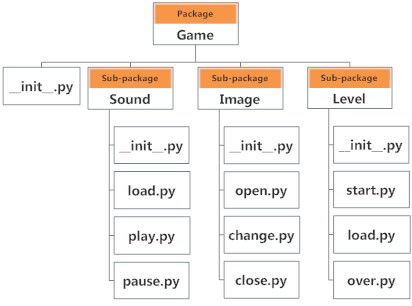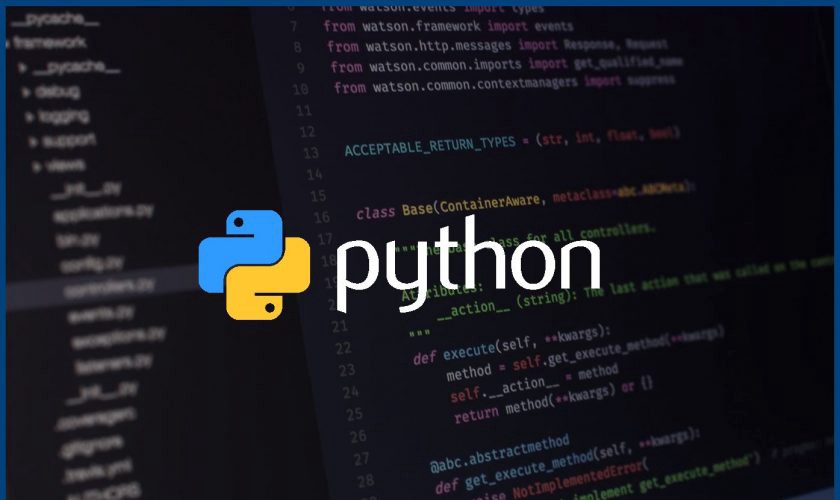(Python Tutorial – 022)
Python Package
In this article, you’ll learn to divide your code base into clean, efficient modules using Python packages. Also, you’ll learn to import and use your own or third party packages in your Python program.
What are packages?
We don’t usually store all of our files on our computer in the same location. We use a well-organized hierarchy of directories for easier access.
Similar files are kept in the same directory, for example, we may keep all the songs in the “music” directory. Analogous to this, Python has packages for directories and modules for files.
As our application program grows larger in size with a lot of modules, we place similar modules in one package and different modules in different packages. This makes a project (program) easy to manage and conceptually clear.
Similarly, as a directory can contain subdirectories and files, a Python package can have sub-packages and modules.
A directory must contain a file named __init__.py in order for Python to consider it as a package. This file can be left empty but we generally place the initialization code for that package in this file.
Here is an example. Suppose we are developing a game. One possible organization of packages and modules could be as shown in the figure below.

Importing module from a package
We can import modules from packages using the dot (.) operator.
For example, if we want to import the start module in the above example, it can be done as follows:
import Game.Level.startNow, if this module contains a function named select_difficulty(), we must use the full name to reference it.
Game.Level.start.select_difficulty(2)If this construct seems lengthy, we can import the module without the package prefix as follows:
from Game.Level import startWe can now call the function simply as follows:
start.select_difficulty(2)Another way of importing just the required function (or class or variable) from a module within a package would be as follows:
from Game.Level.start import select_difficultyNow we can directly call this function.
select_difficulty(2)Although easier, this method is not recommended. Using the full namespace avoids confusion and prevents two same identifier names from colliding.
While importing packages, Python looks in the list of directories defined in sys.path, similar as for module search path.
Disclaimer: The information and code presented within this recipe/tutorial is only for educational and coaching purposes for beginners and developers. Anyone can practice and apply the recipe/tutorial presented here, but the reader is taking full responsibility for his/her actions. The author (content curator) of this recipe (code / program) has made every effort to ensure the accuracy of the information was correct at time of publication. The author (content curator) does not assume and hereby disclaims any liability to any party for any loss, damage, or disruption caused by errors or omissions, whether such errors or omissions result from accident, negligence, or any other cause. The information presented here could also be found in public knowledge domains.
Learn by Coding: v-Tutorials on Applied Machine Learning and Data Science for Beginners
Latest end-to-end Learn by Coding Projects (Jupyter Notebooks) in Python and R:
All Notebooks in One Bundle: Data Science Recipes and Examples in Python & R.
End-to-End Python Machine Learning Recipes & Examples.
End-to-End R Machine Learning Recipes & Examples.
Applied Statistics with R for Beginners and Business Professionals
Data Science and Machine Learning Projects in Python: Tabular Data Analytics
Data Science and Machine Learning Projects in R: Tabular Data Analytics
Python Machine Learning & Data Science Recipes: Learn by Coding
R Machine Learning & Data Science Recipes: Learn by Coding
Comparing Different Machine Learning Algorithms in Python for Classification (FREE)
There are 2000+ End-to-End Python & R Notebooks are available to build Professional Portfolio as a Data Scientist and/or Machine Learning Specialist. All Notebooks are only $29.95. We would like to request you to have a look at the website for FREE the end-to-end notebooks, and then decide whether you would like to purchase or not.
Python Example – Write a Python program to find the available built-in modules
Python tutorials for Business Analyst – Python Input, Output and Import
